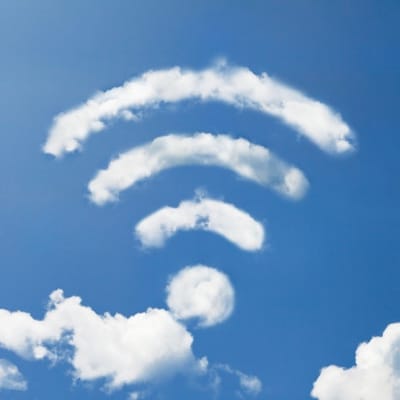In-Flight Wi-Fi Adoption Boosted by Budget Airlines, to Reach More Than 10,400 Aircraft by 2020

Did you fly somewhere exotic over the holidays? Moreover, did the airline provide in-flight Wi-Fi connectivity? Just a few years ago, the thought of using a mobile phone onboard seemed like it would never become a reality but today, several thousand aircraft and dozens of airlines have installed Wi-Fi.
This month, an annual report from Route Happy reveals that in-flight web access is growing among airlines and that American carriers are taking the lead. 60 airlines now offer in-flight connectivity, rising from 52 last year. Check out the enormous Route Happy infographic for a detailed breakdown of the statistics.

Besides the major airlines, a study from Juniper Research last year found that the adoption of in-flight Wi-Fi by budget airlines will provide a boost to the connected IFE (in-flight entertainment) market, driving the number of connected commercial aircraft to over 10,400 by 2020. This will represent over a threefold increase from an estimated 3,200 this year.
The new research, In-Flight Entertainment & Wi-Fi Connectivity: Market Prospects 2015-2020, found that the decreasing costs of standalone in-flight Wi-Fi hardware, which will soon be offered as line-fit equipment by major aircraft manufacturers, will for the first time make connected IFE attractive to low-cost airlines flying short-haul routes.
The BYOD Trend & its Risks
The research also noted that rather than using traditional embedded seatback screens, many budget airlines are adopting the BYOD (Bring Your Own Device) approach. Here, passengers are allowed to use their own devices on-board the aircraft to stream airline owned content, thereby reducing IFE hardware costs and weight.
However, this BYOD trend raises important safety and security issues as the airlines have little control over these devices. “Airlines must ensure that they address all types of risks, including that of a rogue passenger hacking into an aircraft’s avionic systems or servers, with potentially disastrous consequences”, noted research author Gareth Owen.

Connected IFE Now a ‘Must Have’ for Airlines
Meanwhile, the research observes that service providers are positioning themselves as end-to-end providers able to offer a full suite of connectivity, content and hardware offerings to their airline customers. Many of these, including key providers such as Gogo, Panasonic Avionics, Global Eagle Entertainment, Thales and SITA OnAir also face business challenges, particularly with respect to developing viable connectivity business models, and consolidation is likely as the market develops.

Improved Connectivity Options also a Driver
Another important driver behind this growth is the increasing availability of Air-To-Ground (ATG) and satellite networks across the world. The research found that new advanced ATG networks, such as Inmarsat’s European Aviation Network, will result in lower cost connectivity and higher capacity over high traffic density regions such as Europe. At the same time, new High Throughput Satellites will result in reduced satellite segment costs and increased capacity on a more global basis.
The whitepaper, ‘Connected Sky’ is available to download from the Juniper website together with further details of the full research.
Mobile Industry Review would like to thank Juniper Research for the information contained in this article.



